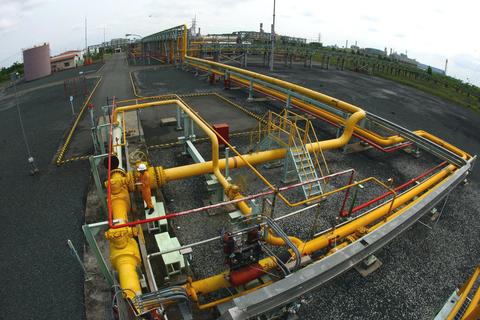Lao central bank monitors kip/baht exchange rate
Lao central bank monitors kip/baht exchange rate
The Bank of the Lao PDR is keeping a close watch on exchange rates after the value of the kip has seen a sharp drop against the Thai baht over the past few weeks.
“The movement of exchange rates is still within our broad policy framework. We will closely monitor the movement of the exchange rate and introduce measures, if necessary, to keep the value of the kip fluctuating against major international currencies within our annual broad target of five percent,” Monetary Policy Department Deputy Director General, Mr Phetsathaphone Keovongvichith, said yesterday.
The kip declined in value from 261 to the baht in December to 267 kip per baht yesterday. The depreciation of the kip in relation to the baht could have an effect on consumer goods in Laos since the country imports most consumables from Thailand. Depreciation could make traders put up the prices of their imported goods so they don't lose out.
Mr Phetsathaphone said one of the main reasons for the drop in the value of the kip against the baht was the strength of the baht against other currencies recently including the US dollar. He said it did not make sense to keep the value of the kip strong against the baht.
“If we do not keep the value of the kip vis-à-vis the baht in line with the trend of international foreign exchange markets, there will be room for money traders to arbitrage,” he said, adding that it was better for Laos to keep its policy unchanged for now.
Mr Phetsathaphone said another factor pushing up the value of the baht was the higher demand for the currency in Laos. This occurs because Laos imports most of its consumer goods from Thailand, and because Thailand is a main trading partner of Laos.
The Bank of the Lao PDR (BOL) has pursued a managed floating system as a policy tool and used the exchange rate policy as a nominal anchor to maintain monetary stability. The central bank will maintain the value of the kip move within the target range annually set by the BOL.
Economists say the rising value of the baht against the kip may cause an increase in prices in Laos.
The price of food and vegetables and restaurant dishes has increased significantly over the past few months due to short supply, according to officials from the Lao National Statistic Bureau.
The inflation rate in Laos jumped to 4.73 percent in December.
It is common belief that the rising value of the baht is driving up food prices because traders in Vientiane import goods from neighbouring Thai provinces. The supply of vegetables in Vientiane does not meet market demand
vientiane times
















